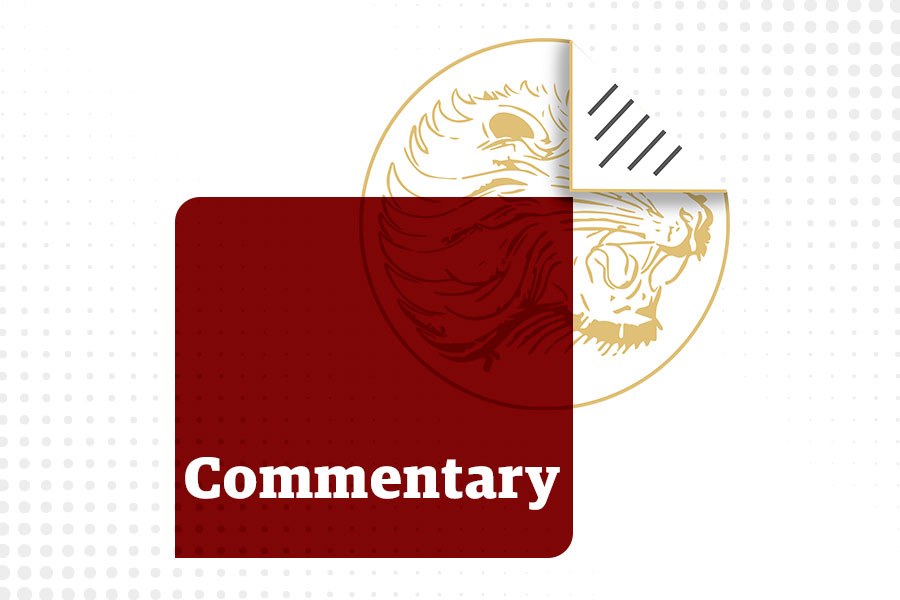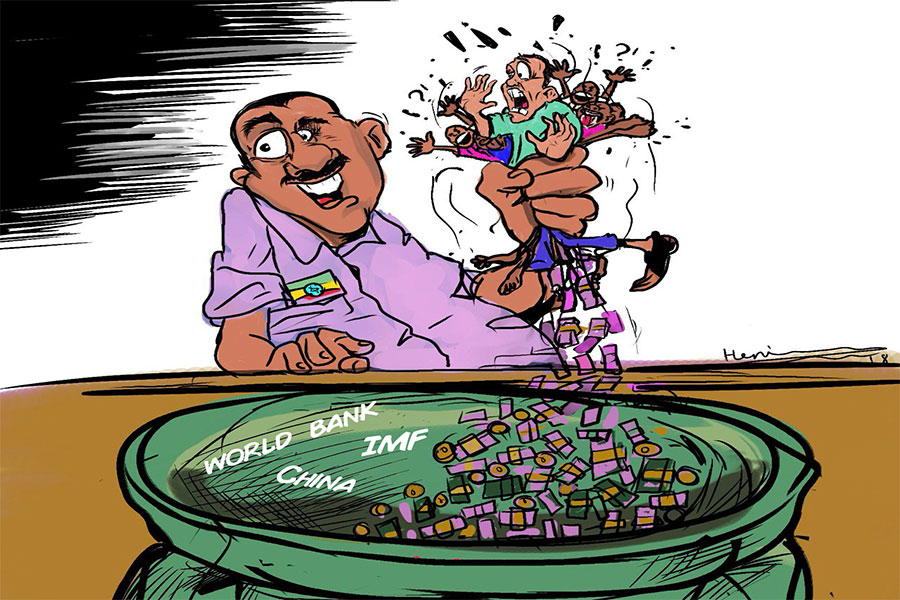
My Opinion | Mar 26,2022
Jul 13 , 2024
By Tesfaye B. Lelissa (PhD)
The National Bank of Ethiopia (NBE) is making a notable shift in its monetary policy framework, moving from a traditional approach centred on money supply control and exchange rate stability to an interest-based system. The transition hopes to address persistent economic pressure and align the country’s financial system with global best practices.
For decades, the NBE relied on pegging the Birr to the US Dollar and implementing administrative measures like restricted lending growth. However, these methods often distorted market signals, impeded the free flow of capital, and proved ineffective in managing high inflation. The rigidity of this framework also made it difficult to respond to evolving economic conditions and external shocks, constraining the central bank’s ability to maintain macroeconomic stability and support long-term economic growth.
Recognising these limitations, the NBE is now adopting an interest-rate-based monetary policy. The new approach centres on the National Bank Rate (NBR) as the primary tool for signalling policy preferences and influencing monetary and credit conditions. Using the NBR, the central bank aims to exert more direct control over financial variables such as credit availability, asset prices, and overall economic activity.
The shift follows a global practice where central banks use policy interest rates to manage economic conditions more effectively.
The initial NBR is set at 15pc, a rate derived from Ethiopia’s current macroeconomic conditions, including declining but still elevated inflation, low base money growth, and slowing bank credit growth. It is a rate comparable to many other countries, reflecting Ethiopia’s ongoing struggle with higher inflation rates. For instance, the Federal Reserve’s funds rate in the United States is currently between five percent to 5.25pc, while the Central Bank of Kenya’s rate is 9.5pc.
The higher rate targets curbing inflationary pressures more aggressively, similar to Turkey’s central bank, which recently set its benchmark rate at around 50pc.
Understandably, the NBE’s interest-rate-based framework is designed to enhance the transmission mechanism of monetary policy. By adjusting the NBR, the central bank hopes to influence commercial bank lending rates, bond yields, and exchange rates more predictably and effectively. This, in turn, should help anchor inflation expectations, creating a more stable economic environment for businesses and consumers.
A critical component of the new framework is the introduction of biweekly Open Market Operations (OMO) auctions. Through these auctions, the NBE would manage liquidity in the banking system, ensuring that the interbank market rate remains close to the NBR. Active liquidity management is expected to stabilise short-term interest rates, enhance monetary policy transmission, and encourage the development of financial markets.
To further support this transition, the NBE has introduced standing facilities, including dual facilities for overnight lending and an overnight deposit. These will allow banks to manage short-term liquidity needs more efficiently. By setting the rates for these facilities topping three percent at NBR, the NBE creates a narrow interest rate corridor that anchors the interbank market rate and limits its volatility. This approach is well-established in central banking, providing a safety net for banks and promoting the stability of short-term interest rates.
The NBE also establishes an electronic platform to facilitate a functional interbank money market. This platform will enable liquidity-surplus banks to lend to liquidity-short banks, enhancing the overall efficiency and stability of the banking system. The NBE will intervene through the auctions in the open market operation if the interbank rate deviates significantly from the NBR, ensuring that the policy rate effectively guides market conditions.
During the transition to this new framework, the NBE will retain its past liquidity management tools as supplementary measures. The flexibility will help address any initial weaknesses or delays in the new transmission mechanisms, ensuring overall financial system stability. It also plans to develop specific monetary policy instruments for interest-free banking providers, integrating this growing sector into the broader monetary policy framework.
However, the shift to an interest-based monetary policy framework is not without challenges.
One important limitation is the underdeveloped state of Ethiopia’s financial markets. The lack of depth and liquidity in the bond and money markets can limit the effective transmission of interest rate changes to the broader economy. Policymakers will be compelled to prioritise financial market development, enhancing the depth and liquidity of their bond and money markets. This will require coordinated efforts from the central bank, financial regulators, and other stakeholders.
Another challenge is the limited understanding of the monetary policy transmission mechanisms within the Ethiopian context. The linkages between the central bank’s policy rate and macroeconomic variables like inflation, investment, and consumption are not well-established. Policymakers will need to invest in research and analysis to develop a robust understanding of these interactions and ensure that interest rate adjustments effectively influence the desired economic outcomes.
Inflationary pressures and the need to maintain exchange rate stability further complicate the NBE’s policy decisions. Ethiopia’s history of high and volatile inflation can undermine the effectiveness of interest rate adjustments as a tool for controlling inflation. Managing exchange rate dynamics while pursuing broader economic growth objectives will also require a nuanced and well-coordinated policy approach.
Central bank autonomy is another critical factor. In many developing economies, central banks face pressures to align their policies with broader political and fiscal objectives, which can limit their ability to set and adjust key interest rates independently. Enhancing the NBE’s autonomy through institutional and legal reforms will be crucial for effectively implementing the new framework.
Successful development of a functional interbank money market will also be essential. Key challenges include ensuring adequate liquidity, encouraging active trading among banks, and achieving robust price discovery. The NBE will need to carefully manage system-wide liquidity through the open market operations, promote trust and transparency among market participants, and closely monitor market developments to maintain alignment between interbank rates and the NBR.
Another major challenge will be addressing the interest-free banking sector’s unique requirements. The NBE plans to introduce Sharia-compliant monetary policy tools tailored for this sector, ensuring their effective integration into the new framework. This will involve designing innovative financial structures and mechanisms that align with Islamic banking principles and ensuring seamless coordination between interest-rate-based and Sharia-compliant instruments.
Coordinating the new interest-rate-based approach with existing quantitative tools will require careful calibration and communication. The NBE will need to clearly define the roles of each set of instruments and ensure that their deployment does not undermine each other’s effectiveness. Effective communication with the banking industry and broader financial community will be crucial during this transition period.
Another complex task will be navigating the current macroeconomic conditions and public expectations. The NBE will need to strike a balance between maintaining price stability and supporting economic growth while effectively communicating its policy decisions and the underlying economic rationale to the public and market participants.
Capacity building within the NBE and adapting institutional processes will be essential. Developing new skills, enhancing technological capabilities, and promoting close coordination with stakeholders will be crucial for successfully implementing the new framework. Investing in extensive training programs and knowledge-sharing initiatives will ensure that the NBE’s staff is equipped to navigate the complexities of the new policy environment.
The NBE will need to develop a robust framework for forward guidance and transparency. Effective communication of policy decisions, objectives, and the reasoning behind them will be crucial for building trust and shaping public expectations. Enhancing financial literacy and understanding of monetary policy mechanisms among the general public will also be essential for cultivating a shared understanding of the central bank’s actions.
Despite these challenges, the NBE’s monetary policy reforms have the potential to yield noteworthy long-term economic benefits for Ethiopia. By implementing a more robust and market-oriented framework, the NBE can better manage inflation, enhance financial market development, and create a more predictable environment for businesses and consumers. These reforms will align Ethiopia’s monetary policy with global best practices, increasing its competitiveness and attention by foreign investors.
Tesfaye Boru Lelissa (teskgbl@gmail.com), president of Global Bank S.C.
PUBLISHED ON
Jul 13,2024 [ VOL
25 , NO
1263]


My Opinion | Mar 26,2022

Agenda | Sep 04,2021

Commentaries | Dec 09,2023

Editorial | May 27,2023

Fortune News | Aug 10,2019

Commentaries | Nov 25,2023

Fortune News | May 23,2025

Radar | Jul 17,2022

Fortune News | Jun 10,2023

Fortune News | Feb 19,2022

Photo Gallery | 176744 Views | May 06,2019

Photo Gallery | 166957 Views | Apr 26,2019

Photo Gallery | 157505 Views | Oct 06,2021

My Opinion | 136933 Views | Aug 14,2021

Dec 22 , 2024 . By TIZITA SHEWAFERAW
Charged with transforming colossal state-owned enterprises into modern and competitiv...

Aug 18 , 2024 . By AKSAH ITALO
Although predictable Yonas Zerihun's job in the ride-hailing service is not immune to...

Jul 28 , 2024 . By TIZITA SHEWAFERAW
Unhabitual, perhaps too many, Samuel Gebreyohannes, 38, used to occasionally enjoy a couple of beers at breakfast. However, he recently swit...

Jul 13 , 2024 . By AKSAH ITALO
Investors who rely on tractors, trucks, and field vehicles for commuting, transporting commodities, and f...

Oct 18 , 2025
The political establishment, notably the ruling party and its top brass, has become p...

Oct 11 , 2025
Ladislas Farago, a roving Associated Press (AP) correspondent, arrived in Ethiopia in...

Oct 4 , 2025
Eyob Tekalegn (PhD) had been in the Governor's chair for only weeks when, on Septembe...

Sep 27 , 2025
Four years into an experiment with “shock therapy” in education, the national moo...

Oct 18 , 2025 . By NAHOM AYELE
In a sweeping reform that upends nearly a decade of uniform health insurance contribu...

A bill that could transform the nutritional state sits in a limbo, even as the countr...

Oct 18 , 2025 . By SURAFEL MULUGETA
A long-planned directive to curb carbon emissions from fossil-fuel-powered vehicles h...

Oct 18 , 2025 . By BEZAWIT HULUAGER
Transaction advisors working with companies that hold over a quarter of a billion Bir...